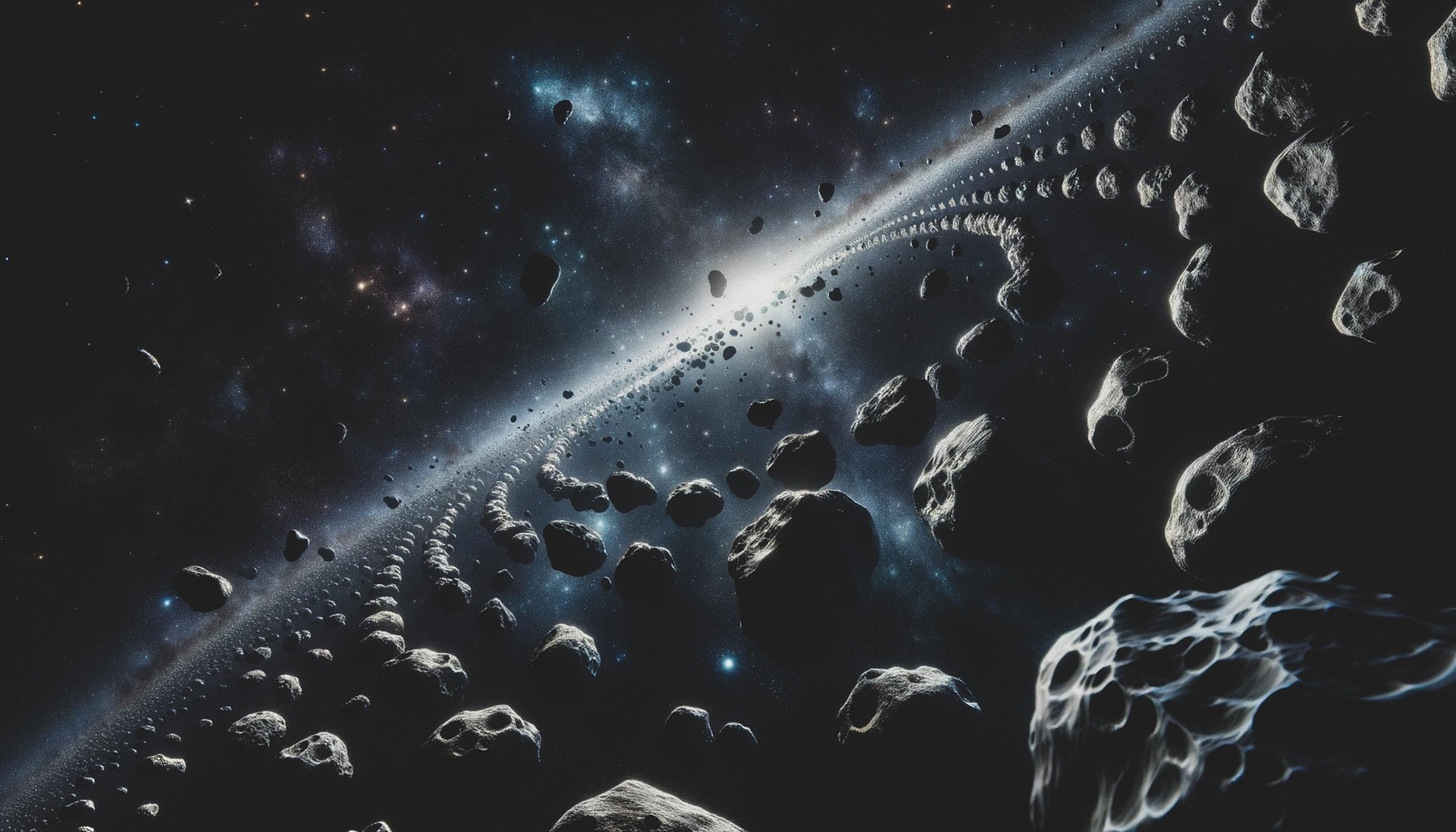🌌 Dark Matter and Dark Energy
Most of the cosmos is invisible to our instruments. Galaxies rotate as if they contain far more mass than we can see, and the Universe’s expansion is speeding up rather than slowing down. We call these two mysteries dark matter (hidden mass that binds) and dark energy (a driver of accelerated expansion).
Plain-language summary:
The Universe looks mostly “empty”, yet it holds form. Something unseen keeps galaxies together, and something else stretches space faster over time.
🛰️ What Science Sees (anchored, brief)
Dark matter (binding):
Galaxy rotation curves stay unexpectedly flat at large radii → indicates hidden gravitating mass.
Gravitational lensing bends light more than luminous matter predicts; cluster collisions (e.g., Bullet Cluster) show mass–light separation.
Large-scale structure (cosmic web of filaments and nodes) is modelled more accurately with an unseen mass scaffold.
Dark energy (stretching):
Type Ia supernovae appear dimmer than expected for a decelerating universe → accelerated expansion.
CMB anisotropies and BAO act as cross-checks; together they fit a vacuum-like component with equation-of-state ~ −1 (cosmological-constant–like behaviour).
Takeaway: Dark matter holds things together locally; dark energy pushes things apart on the largest scales.
🧬 Cosmos as a Living Body (Analogy)
Think about everyday objects or the human body: mostly “empty space” between atoms, yet held in coherent form by an organising principle. By analogy, treat the cosmos as a living body: galaxies behave like molecules, clusters like cells, and the apparent voids function as interstitial regions that enable coordination across the whole. On this reading, a cosmic consciousness (or organising intelligence) sustains structure across scales—selecting which patterns persist (cohere) and where space opens (disperse). The analogy doesn’t replace observational cosmology; it sits alongside it, as an interpretive lens in which “dark” phenomena appear as signatures of deeper organisation that current instruments don’t yet capture directly.
Why this matters: Read dark matter and dark energy as complementary tendencies of an organised whole—coherence (holding patterns together) and dispersion (opening space)—rather than as errors in the model.
🌀 Similarity Theory Bridge
Similarity Theory treats reality as frames and layers that consciousness animates and selects. “Dark” phenomena then reflect how selection and structure appear across scales:
Frames & hidden layers:
What seems invisible may be structure in deeper frames that doesn’t couple to light the way ordinary matter does, yet still shapes geometry via gravity.Cohere locally, disperse globally:
Dark matter = pattern-holding across frames (a lattice favouring coherence—keeping galaxies and clusters intact).
Dark energy = pattern-spreading across frames (a tendency toward dispersion—accelerating separation of very large structures).
One selection dynamic:
Both effects express a single selection principle operating at different scales and layers of reality.
🔧 Heuristics (useful ways to think about it)
Geometry first: Expect lensing-derived mass maps to trace the cosmic web’s geometry, even where visible matter is sparse.
Scale threshold: Look for a transition from coherence (binding dominates) to dispersion (acceleration dominates) as you move from galaxy/cluster scales out to hundreds of megaparsecs.
Bridge, not replacement: Use ΛCDM to fit the data, and Similarity Theory to interpret why these “dark” preferences appear across scales.
❓ FAQ
Q: If it’s “dark”, how do we know it’s there?
A: Through gravity. Rotation curves, lensing, the CMB, BAO, and supernovae all point to extra mass and accelerated expansion we can’t see directly.
Q: Does Similarity Theory replace standard cosmology?
A: No. It’s complementary. Standard models describe what happens; Similarity Theory offers a why grounded in frames, scale-dependent preferences, and consciousness.
Q: Is dark matter just ordinary stuff we can’t see?
A: Observations strongly limit ordinary (baryonic) options. The dominant component is largely non-luminous and weakly interacting—or, in this framework, a geometric/layered effect across frames.
🔗 See also (internal cross-links)
Holography • Mathematical Structures • Observer Effect • Arrow of Time • Entropy & Order
📚 References
Rubin & Ford — Flat galaxy rotation curves (missing mass).
Zwicky — Early “missing mass” in clusters.
Clowe et al. — Bullet Cluster lensing (mass–light separation).
Planck Collaboration — CMB anisotropies and ΛCDM parameters.
Riess / Perlmutter et al. — Type Ia supernovae and accelerating expansion.
Peebles — Large-scale structure overview.
Raphael, S. (2025) — Similarity Theory: frames, scale, consciousness.


